Scientific name Arachnothera Higher classification Sunbird Order Passerine | Family Nectariniidae Phylum Chordata Rank Genus | |
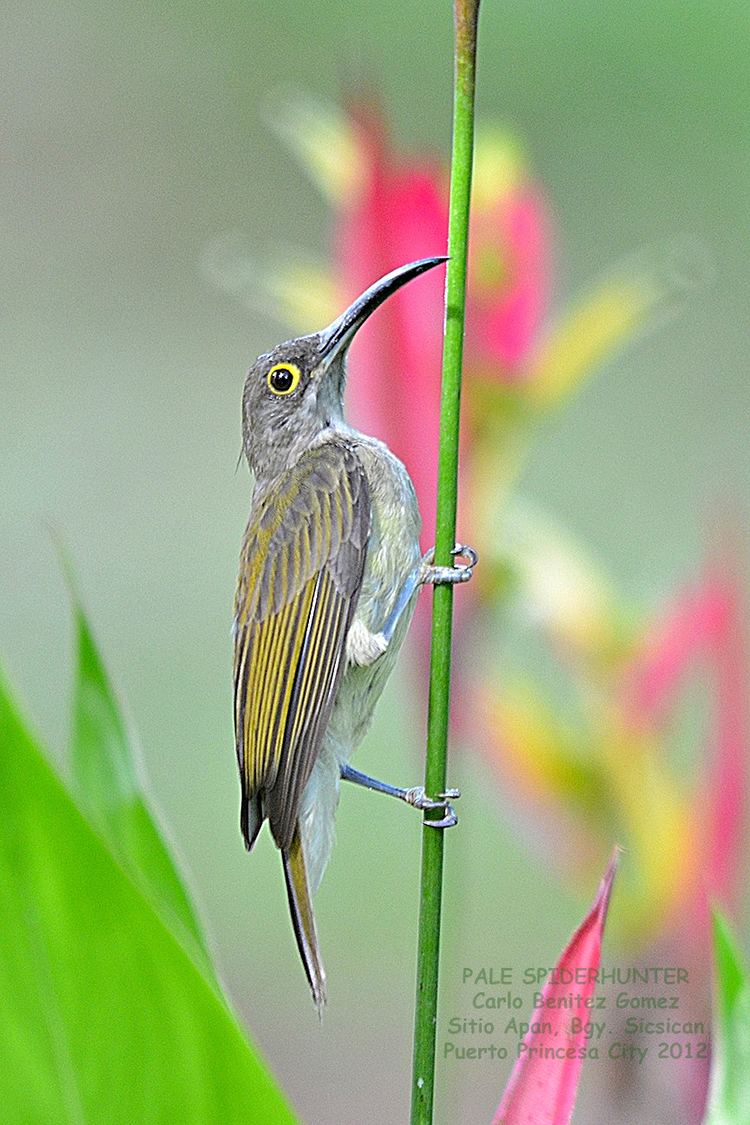 | ||
Lower classifications Little spiderhunter, Streaked spiderhunter, Spectacled spiderhunter, Long‑billed spiderhunter, Yellow‑eared spiderhunter | ||
Streaked spiderhunter kelicap sabit berjalur
The spiderhunters are birds of the genus Arachnothera, part of the sunbird family Nectariniidae. The genus contains eleven species found in the forests of south and southeastern Asia. They are large representatives of the sunbird family, with drab plumage and long strongly curved bills. They feed on both nectar and a range of small arthropods.
Contents
- Streaked spiderhunter kelicap sabit berjalur
- Little spiderhunter bird feeding babies
- Distribution and habitat
- Description
- Diet and feeding
- Breeding
- Species
- References

Little spiderhunter bird feeding babies
Distribution and habitat
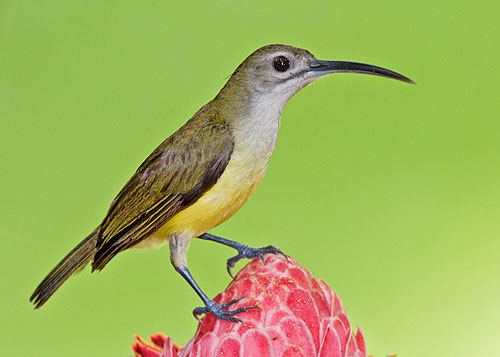
Unlike the rest of the family, which is more widespread, the spiderhunters are confined to the Oriental zoogeographic region, occurring from India east to The Philippines and from the Himalayas south to Java; they reach their greatest species diversity in the Thai-Malay peninsula, Sumatra and Borneo. The spiderhunters are mostly forest birds, occupying a wide range of forest types including true rainforest, dipterocarp forest, swamp forest, bamboo forest, secondary forest, forest edge and other highly degraded forest. In addition several species occur in human-created habitat such as gardens or plantations. Most species are lowland species, but the Whitehead's spiderhunter is more of a montane species.
Description
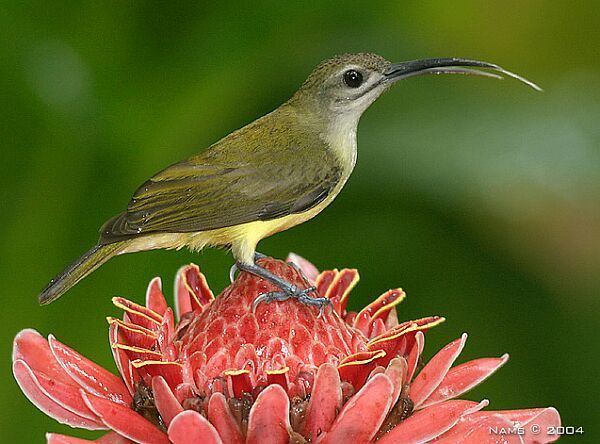
The spiderhunters are amongst the largest of their family, measuring between 13 and 22 cm in length. The spectacled spiderhunter is the heaviest of the sunbirds, weighing as much as 49 g. The bills of the spiderhunters are long, at least twice the length of the head, and are decurved and stout. The tongue forms a complete tube for most of its length. The plumage is much drabber than the other brightly coloured sunbirds, is the same for both sexes, and contains no iridescence. The uppersides of most species are olive-green and the undersides dull white or yellow - in half the species the undersides are streaked. The most atypical spiderhunter plumage is that of the Whitehead's spiderhunter, which is dark brown with white streaking on the undersides and back and a yellow rump.
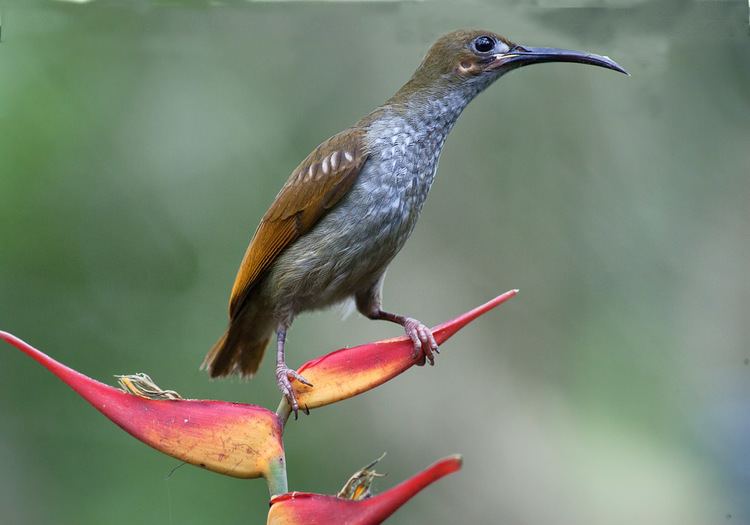
The calls of the spiderhunters are very simple, typically a metallic chip which is repeated multiple times to form the song. The song of the little spiderhunter is described as an "incessant squeaky whistle".
Diet and feeding

The spiderhunters are omnivorous. As their name suggests they will eat spiders, and are capable of extracting spiders from the centre of their webs, a tricky task. They also consume a wide range of other small arthropod prey including crickets, caterpillars, butterflies, ants and other insects. In addition to animal prey they also consume nectar from flowers. Their tubular tongue is pushed against the top of the upper mandible of the bill, then pulled in and out, creating a pressure difference which allows the nectar to be sucked into the mouth. Spiderhunters may be important pollinators of some species of plants, and species pollinated by spiderhunters have long tubular flowers. They may also participate in nectar robbing, which consists of inserting the bill into the side of the flower to extract nectar without being dabbed with pollen. Little is known about their territorial behaviour, but there have been reports of some species defending territories. The spiderhunters are less gregarious than other sunbirds, and are usually seen alone or as part of a pair.
Breeding
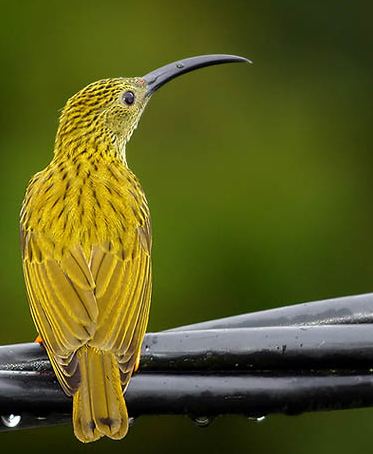
The spiderhunters are thought to be monogamous like most of the rest of the family. They vary from the other sunbirds in the nature of their nest, which is suspended underneath a large leaf, usually a banana leaf but sometimes a palm frond or even a branch. The style of nest can be quite variable, a simple cup in the case of the streaked spiderhunter, an elongated tube for the yellow-eared spiderhunter and a bottle shape for the long-billed spiderhunter. The nests are suspended from the leaf by using spider web or by pushing plant fibres through the leaf. The nests are made of grasses and leaves and lined with soft materials. Nest construction, as is typical of the family, is carried out by the female alone. Unlike the other sunbirds, however, both the male and female incubate the eggs. The spiderhunters lay two or three eggs. Their nests are sometimes parasitised by cuckoos.
Species
There are 11 species:
